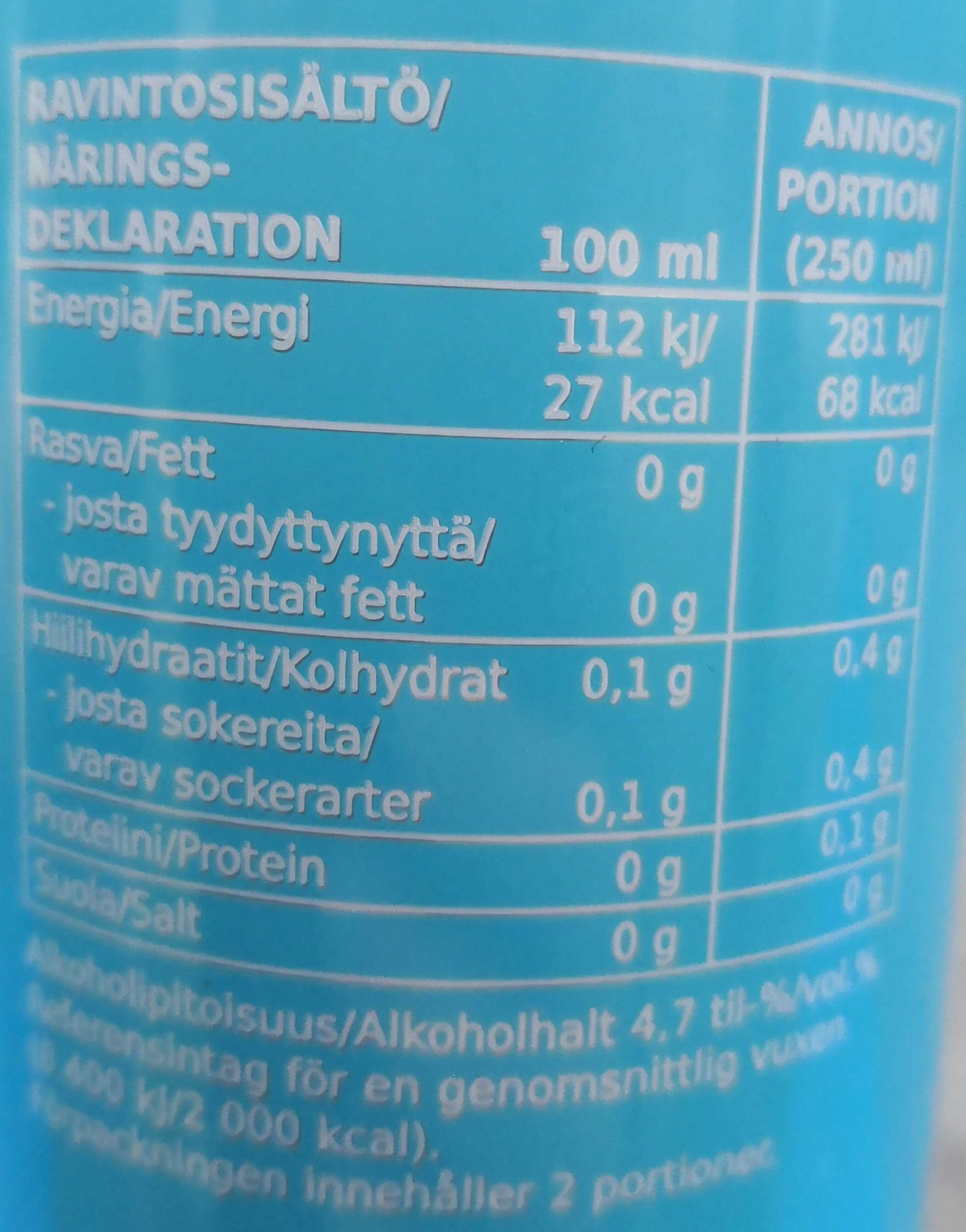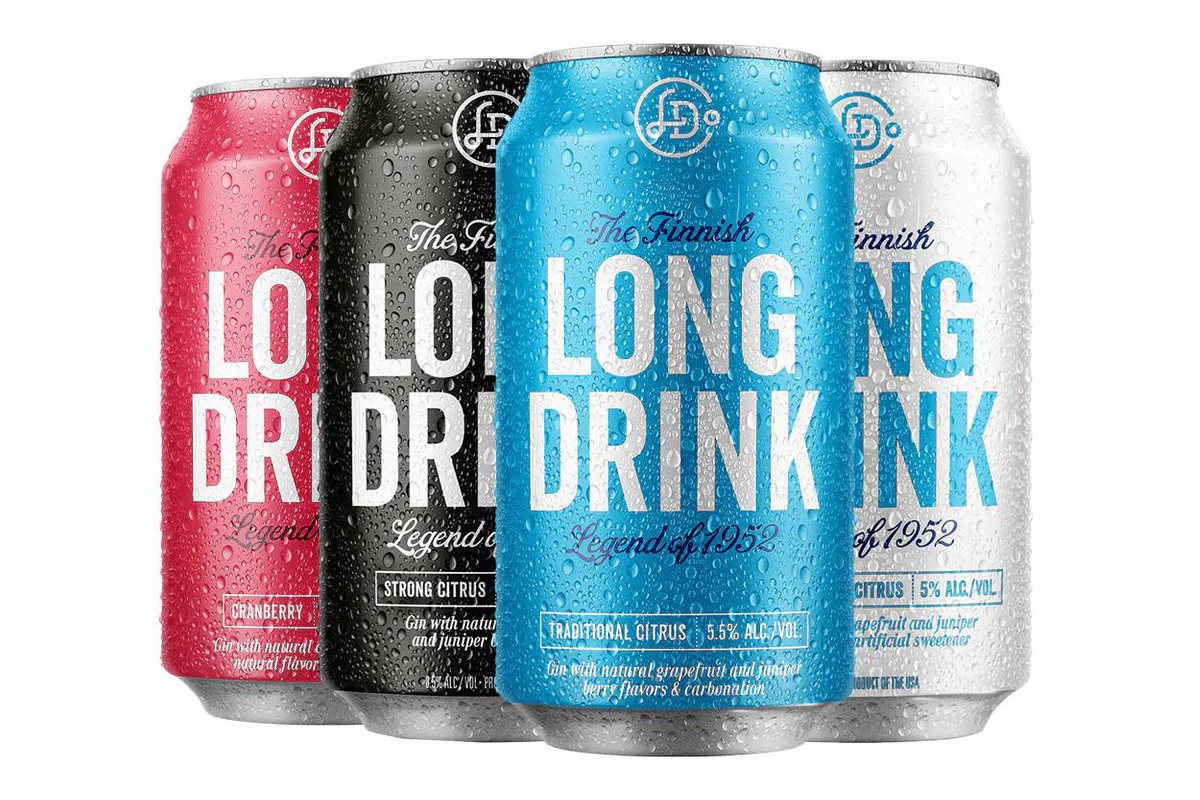Are you Curious About Long Drink Nutrition Facts? You’re not alone if you’re a fan of the Long Drink, also known as the Finnish Long Drink. This famous alcoholic beverage has gained international recognition for its refreshing blend of gin, grapefruit soda, and other flavors.
While it’s loved for its taste, it’s essential to consider its nutritional value. In this blog post, we’ll explore the top nutrition facts of the Long Drink, giving you a better understanding of what you consume with each sip. So, grab your favorite brand and dive into the Long Drink nutrition facts!
Table of Contents
ToggleAn Overview of the Finnish Long Drink
The Finnish Long Drink is a unique concoction. It blends gin and grapefruit soda. Other flavors are added to create depth. This beverage was first introduced in Finland. It quickly became a staple at various events. Now, it enjoys worldwide popularity. Many enjoy its refreshing taste. Brands across the globe offer their versions.
Some are pre-mixed in cans. This makes it convenient for consumers. It’s perfect for social gatherings or a relaxing evening. Its history and evolution are fascinating. It represents Finnish innovation in the beverage industry. This drink is more than just alcohol; it’s a cultural icon.
The Caloric Content of a Long Drink

A typical Long Drink holds about 180-200 calories. This is akin to many sweetened beverages. These calories primarily come from the sugar content. Thus, it’s comparable to a soda in caloric value. However, it also contains alcohol. So, its impact on diet may differ. Knowing this can guide your consumption choices.
Especially if you’re tracking your calorie intake, it’s also helpful for those trying to balance enjoyment with health. Always consider this when reaching for another can. It helps in making informed decisions. Just remember, these are averages. Specific brands might vary slightly. So, always check the label for the most accurate details.
Sodium Levels in Long Drinks
Low Sodium Content:
Long Drinks are known for their low sodium levels, typically ranging from 0-15 mg per can. This makes them a heart-friendly choice for those monitoring their sodium intake.
Compared to Other Beverages:
When compared to many other alcoholic and non-alcoholic beverages, Long Drinks stand out for their minimal sodium content, contributing to their appeal as a healthier option.
Impact on Blood Pressure:
The negligible sodium levels in Long Drinks are unlikely to have a significant effect on blood pressure, a common concern with higher sodium beverages.
Hydration Considerations:
While low in sodium, it’s important to remember that Long Drinks are alcoholic and may not aid in hydration as effectively as non-alcoholic, low-sodium options.
Choosing Wisely:
For individuals on a low-sodium diet or those mindful of their sodium consumption, Long Drinks offers a viable option to enjoy responsibly without the worry of high sodium intake.
Sugar Content: A Closer Look

The sugar content in Long Drinks might surprise you. Often, these beverages pack between 18-25 grams of sugar. That’s a significant amount, almost mirroring some sodas. This sweetness contributes to the drink’s refreshing taste.
Yet, consumers must be aware, especially those monitoring their sugar intake. For context, the American Heart Association recommends. Men limit their daily sugar to 36 grams and women to 25 grams.
Hence, a single can could nearly meet that guideline. Awareness can lead to better consumption choices. Indeed, savoring a Long Drink may require moderation. Given its sugar level, balancing enjoyment with health becomes essential. Transitioning to the next topic, let’s explore the drink’s alcohol content.
Alcohol by Volume (ABV) Explained
The ABV in Long Drinks varies widely. This ranges from a mild 5.5% to a robust 8.5%. It indicates the alcohol percentage per volume. So, it’s crucial to note before indulging. A higher ABV means the drink is more potent. Therefore, it can affect you more quickly. This difference impacts how your body processes alcohol.
Knowing the ABV helps you plan your consumption. It guides you to drink responsibly. Additionally, it aids in comparing Long Drinks to other beverages. Always check the ABV on the can. It’s a smart way to gauge how much you’re drinking. Remember, enjoying responsibly is critical.
The Ingredient List Unpacked
Carbonated Water:
The foundation of the Long Drink provides its refreshing effervescence and acts as a solvent for the other ingredients.
Gin or Neutral Spirits:
Responsible for the alcoholic content and distinctive taste. Gin adds a botanical note, while neutral spirits keep the flavor profile focused on the citrus and sweeteners.
Natural Flavors:
These enhance the drink’s complexity, often derived from citrus fruits like grapefruit, adding depth beyond the essential sweetness.
Grapefruit and Other Citrus Juices:
Contribute to the tangy, refreshing taste that defines the Long Drink, adding natural sweetness and acidity.
Sugar or Sweeteners:
Used to balance the bitterness of the alcohol and acidity of the citrus, they contribute to the overall caloric content and sweetness level.
Understanding the Role of Preservatives

Preserving Freshness:
Preservatives in Long Drinks help maintain the beverage’s freshness over time, ensuring that the flavor and quality remain consistent from the moment it’s canned until it’s opened.
Extending Shelf Life:
By inhibiting the growth of microorganisms, preservatives extend the shelf life of Long Drinks, making them more convenient and reliable for consumers and retailers alike.
Ensuring Safety:
Preservatives are crucial for preventing the growth of harmful bacteria and yeasts, which could otherwise pose health risks to consumers.
Enhancing Flavor Stability:
Beyond safety, preservatives play a role in stabilizing the flavors of Long Drinks, ensuring that the intended taste profile is preserved even with temperature variations during transport and storage.
Regulatory Compliance:
The inclusion of preservatives in Long Drinks must comply with food safety regulations, ensuring that all added compounds are within safe consumption limits.
The Significance of Dietary Fiber and Protein
The significance of dietary fiber and protein in Long Drinks is minimal. Indeed, these beverages contain zero grams of both.
Thus, they don’t contribute to your daily fiber or protein needs. This fact is noteworthy, especially for those tracking nutrient intake. Consequently, pairing a Long Drink with a nutritious meal is wise. Such a meal could offset the lack of these nutrients.
Additionally, choosing snacks rich in fiber and protein enhances overall nutrition. It’s also beneficial for maintaining a balanced diet. Furthermore, this approach supports sustained energy levels. It’s essential to consider the broader dietary picture. Incorporating a variety of nutrient-dense foods is vital for optimal health.
Moderation and Consumption Tips
Plan Your Intake:
Before you start drinking, decide how many Long Drinks you’ll have. Sticking to a limit helps manage alcohol consumption.
Pacing is Key:
Try to have one drink per hour. This pacing allows your body to metabolize the alcohol more efficiently, reducing the risk of overindulgence.
Hydration Between Drinks:
For every Long Drink, follow up with a glass of water. This habit helps keep you hydrated, diluting the effects of alcohol.
Enjoy Responsibly with Food:
Consuming food before or while drinking can slow the absorption of alcohol, leading to more controlled intake.
Listen to Your Body:
Pay attention to how you feel. If you start feeling the effects of alcohol more than you’d like, it’s a sign to slow down or stop.
Checking the Label: A Buyer’s Guide
When selecting your Long Drink, scrutinizing the label is critical. Notice the ABV; it hints at the beverage’s strength. .
Next, eye the sugar content. It’s vital for those monitoring intake. Sodium figures are the following. They’re usually low, but checking ensures. The ingredients list provides insight into flavor profiles. Look for natural flavors and juices. This indicates quality.
Also, assess the preservatives used. They keep the drink safe, yet natural options are preferable. Remember, every detail on the label matters. It guides you to a choice that aligns with your taste and health preferences. Making an informed decision elevates your drinking experience.
Conclusion
In wrapping up, exploring the Long Drink’s nutrition reveals much. We’ve journeyed through its caloric landscape. Sugar, its source of sweetness, commands attention. Awareness of alcohol volume enhances responsible enjoyment.
Sodium’s minimal presence spotlights health considerations. Ingredients, both simple and complex, add depth. Preservatives ensure safety and underline quality concerns.
The absence of fiber and protein prompts wise food pairings. Moderation tips guide our consumption. Label scrutiny empowers informed choices. Ultimately, the Long Drink, a cultural icon, offers a unique experience. Balance enjoyment with mindfulness for optimal pleasure. Embrace this knowledge. Let it enhance your Long Drink moments. Cheers to informed sipping!



